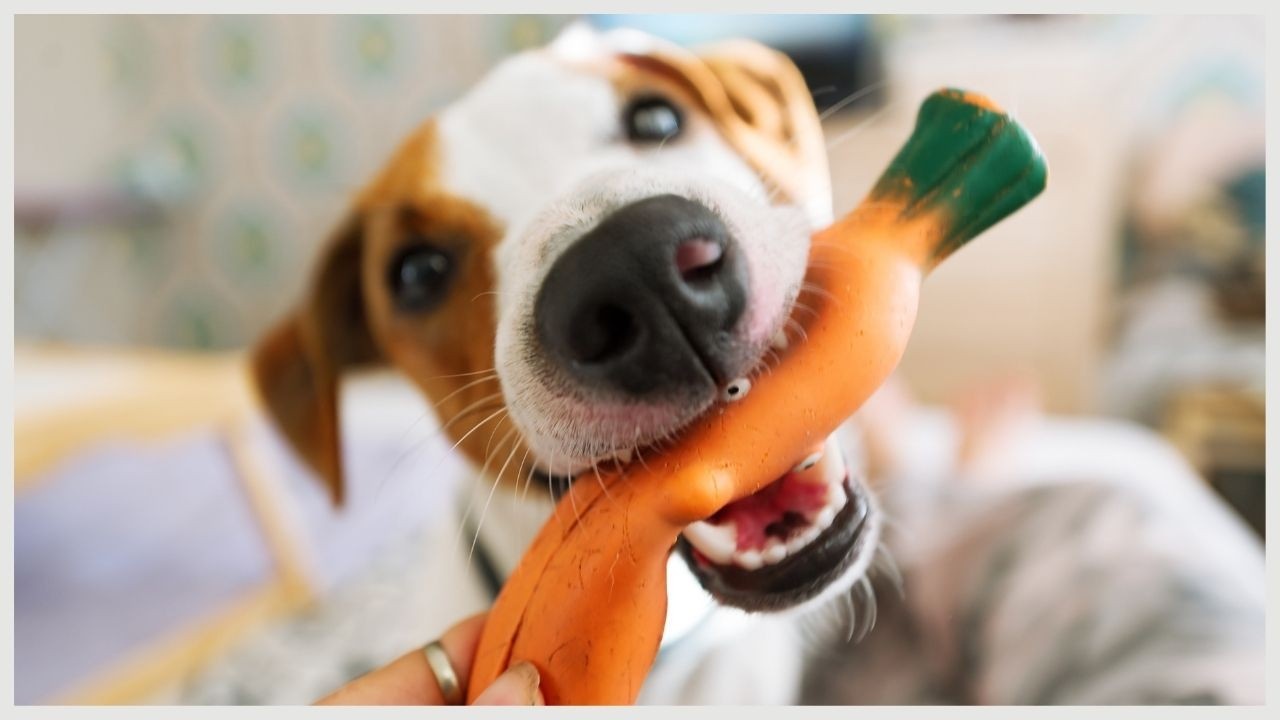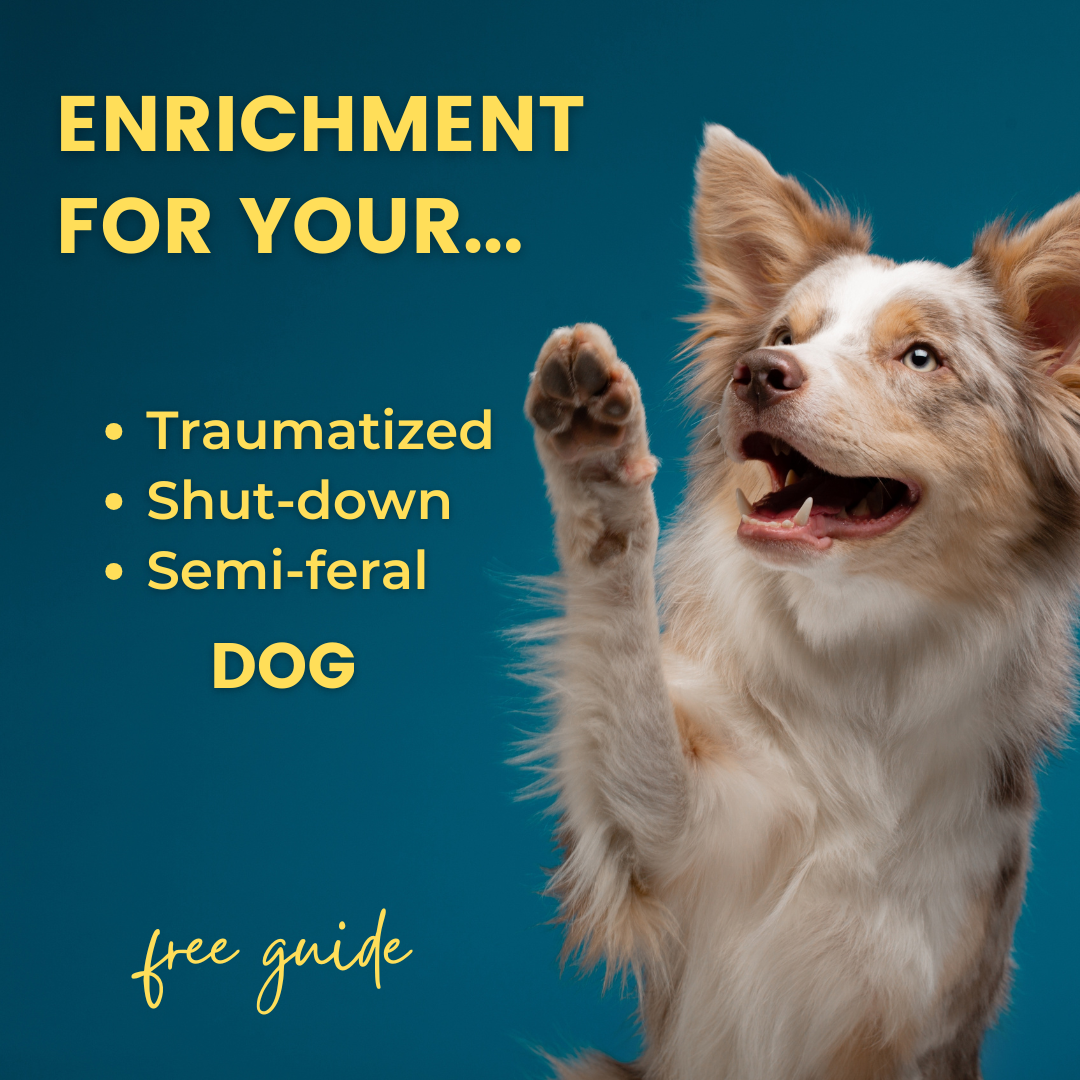Non-Food Reinforcers: Considerations and Favorites
Mar 21, 2022
Are there times when it seems like your dog isn't interested in treats? Food can be a very convenient reinforcer to use in dog training, as we discussed last week. But sometimes, there might be other rewards that your dog would prefer. This week, I talked about using non-food reinforcers in training. Here are some of the key points:
Considerations When Choosing Reinforcers
A positive reinforcer is something your dog gets, following a behavior, that makes that behavior more likely to be repeated in the future. As I discussed last week, there are several things to consider when choosing reinforcers for training:
- Does it fit the training context? Will training with this reinforcer be doable in both your prep work and the real-life situation where you will need the behavior?
- Health concerns: Are there any health considerations that might limit how much of the reinforcer you can use at a time?
- Cost: Does the price of the reinforcer significantly limit the quantity you can use?
- Convenience: Does the reinforcer take significant effort to prepare or deliver?
- "Attention span": Will your dog quickly tire of the reinforcer you have chosen?
- How does it affect training? Does the reinforcer you're considering facilitate, or potentially disrupt your training process?
- Can you control access? To effectively use a reinforcer, you should be able to manipulate its availability, so that your dog receives it after they perform the behavior you're after.
Why Use Non-Food Reinforcers?
When treats are such a convenient, and often very effective, reinforcer in dog training, why use non-food reinforcers?
- Variety: There are many reinforcers other than food (sniffing, play, chasing, petting, toys, etc.) that can be leveraged in training sessions.
- No calories: Non-food reinforcers don't add calories and may add exercise to your dog's day.
- Higher value: Some dogs may find these activities more engaging and valuable than treats.
- Can be similar to reinforcers of problem behaviors: In some cases, these reinforcers can replace the reinforcement for certain problem behaviors. For instance, tugging with a toy might replace tugging on the leash. Or chasing down a toy might replace chasing a squirrel.
- Exercise and enrichment: Many of these reinforcers add mental and physical activity to your dog's routine.
Potential Downside Of Non-Food Reinforcers
While there are plenty of reasons to use non-food reinforcers, there can be disadvantages as well:
- Health concerns: Vigorous physical activities, especially when done repetitively, could cause injury.
- Can be inconvenient: Carrying a toy, or requiring space to play a game like fetch, isn't always convenient.
- Not as quick to deliver: Some non-food reinforcers, such as a game of tug, may take significantly longer for the dog to "consume" than a treat, which can slow down your training.
- Could prompt unwanted behaviors: Your dog might behave in ways you don't like when engaging with toys or activities like sniffing. For example, tossing a toy for a dog who is on a leash could prompt pulling to get to the toy.
- Play is tiring! Reinforcers that are more physically intense may tire out your dog, reducing how long you can train.
Considerations for Non-Food Reinforcers
Let's revisit the considerations for using reinforcers listed above, in the context of non-food reinforcers:
- Does it fit your training context? A lot of non-food reinforcers require space. Can you run, toss a ball, or swing a flirt pole where you'll be training? Will this reinforcer be available in the real life context in which you need the behavior?
- Health effects: High-impact activities could present a risk of injury. Environmental dangers like foxtails might make activities like sniffing risky.
- Cost: Play and toys are low cost.
- Convenience: It can be inconvenient to carry "extra" items like toys around during a walk or training session.
- Will your dog get tired of it? Will your dog become too physically tired during your training session to continue? Or might they become "bored" of the reinforcer?
- Will toys or play disrupt your training? Toys and play might take longer than eating a treat. It might slow down the overall pace of training. It also might encourage behaviors that aren't part of your training plan, like trying to grab a toy out of your hand, or anticipatory backing away during a game like fetch.
- Can you control access? If you are using a toy or play as a reinforcer, you should be able to manipulate their availability easily. However, a potentially reinforcing activity like sniffing is a little harder to control access to unless your dog is on a leash.
Our Group's Favorite Non-Food Reinforcers
We posted a poll in our Facebook support group asking members to list and vote for their favorite food reinforcers. Here are the winners:
- Praise
- Fetch
- Tug
- Petting
- Interactive play that doesn't use toys
Non-Food Reinforcer Ratings
In this week's video, I list some potential pros and cons associated with the Facebook group's favorite non-food reinforcers. Take a look at the table in the video. Aspects I considered were:
- Portability: All of these choices were portable. Some don't require any equipment while fetch or tug could be played with a fairly small toy.
- Space required: Praise, tug, and petting can all be done in fairly limited spaces, but fetch and chase may require more freedom to move around.
- How tiring: Praise and petting won't likely tire out your dog, but tug, fetch, and chase are all high-energy activities that could be tiring. This could be a pro, or a con, depending on your dog's exercise needs.
- How quick to deliver: Praise and petting are easy to deliver to a dog quickly for a brief period, so you can move on to your next training repetition quickly. Some of the more active reinforcers like fetch or running take more time and could slow down training.
I hope you enjoy this week's video and have fun choosing reinforcers for your next training session!
If you're looking for more one-on-one guidance with your fearful or reactive dog, we'd love to work with you! Check out information on our private training.
If you are trying out reinforcers with your fearful dog, we want to hear about your successes or struggles. Join our Facebook group and post your questions or comments there, or email us at [email protected].



